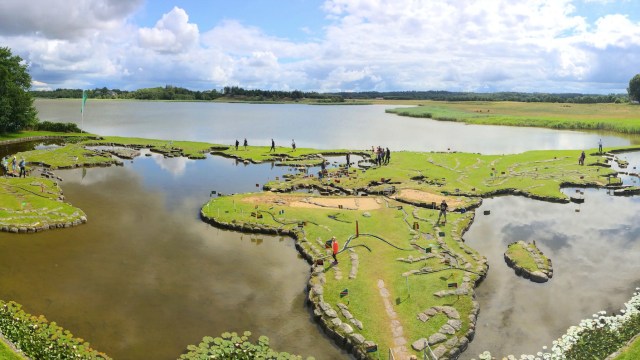Weekend Diversion: The Living Bridges Of India
They only get stronger as time goes on.
“Your problem is to bridge the gap which exists between where you are now and the goal you intend to reach.” –Earl Nightingale
If you want to get from one place to another, you simply go. Unless, of course, there are obstacles that require you to find a creative solution. One of the oldest ways to get around impassable terrain is, as Lucy Wainwright Roche would sing you, to build a Bridge.
Only, bridges have issues on their own. They require maintenance, they decay, they get weaker over time, and they stick out from the natural environment like a sore thumb.
Unless, that is, you take a new tactic, and let nature itself grow the bridge for you.
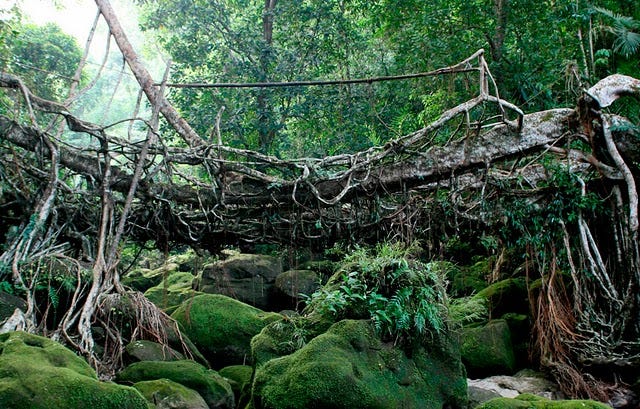
This isn’t some human-built bridge overgrown with vines and other flora. Instead, this is a forest in one of the wettest regions in the world — Meghalaya, India (in the northeast of India) — where a specific species of rubber tree, the Ficus Elastica, grows.

Its roots are long and malleable, and can be shaped and woven into bridge-shapes from one end of a riverbank to the other. After a period of about ten to fifteen years, the roots are strong enough to bear the weight of a human without problem.

Unlike bridges constructed out of steel, concrete, wood or any other commercially available material, these living root bridges only get stronger over time.
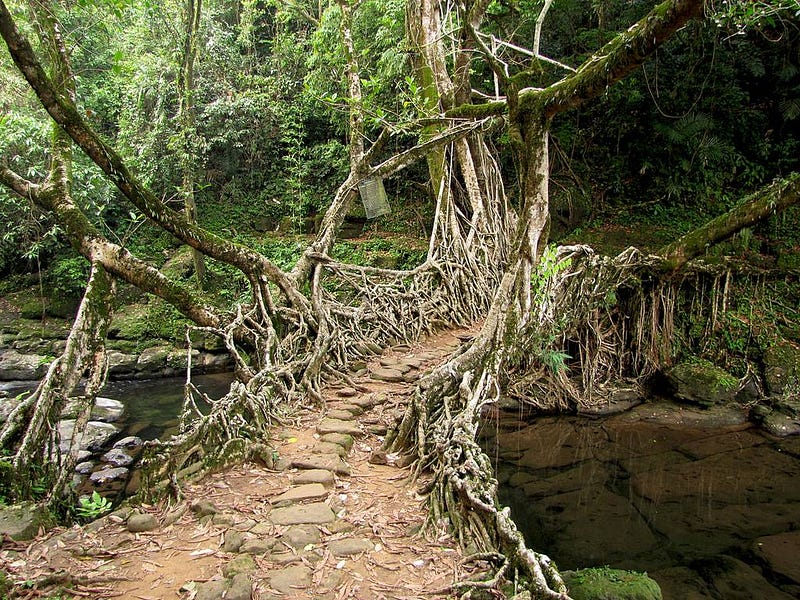
When rainy season arrives, these rivers flood and become otherwise impassable. But thanks to these strong, elevated bridges, getting from one side to the other is no more difficult than a stroll through the woods.
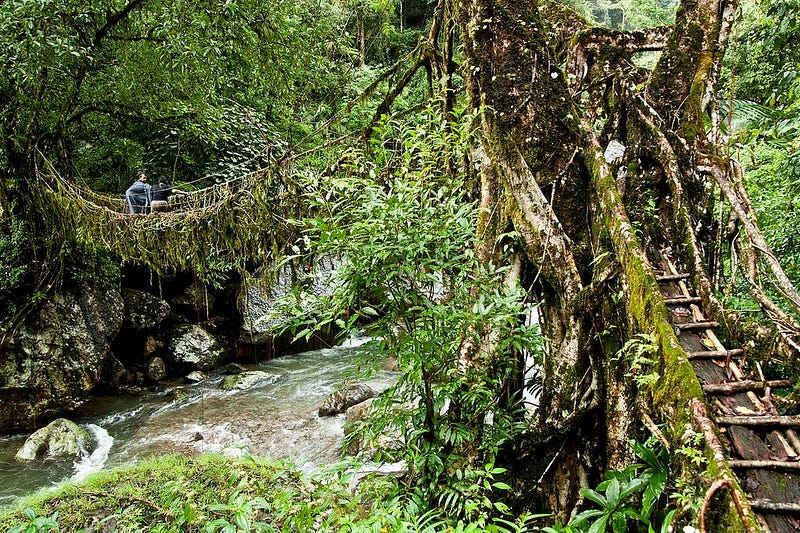
The most famous of these bridges is truly spectacular: the Umshiang double-decker bridge. In a particularly torrential year, the lower bridge itself may occasionally be underwater, but the upper bridge is old enough and strong enough that it can handle the foot traffic if need be.
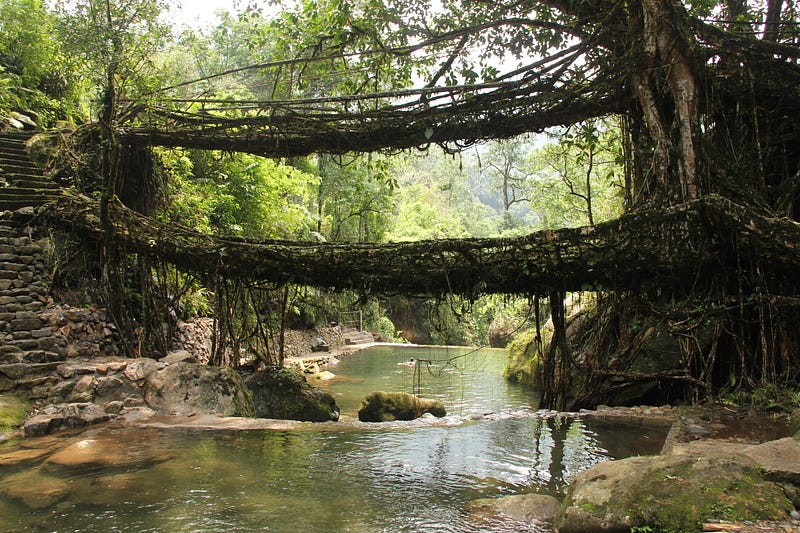
Arshiya Urveeja Bose.
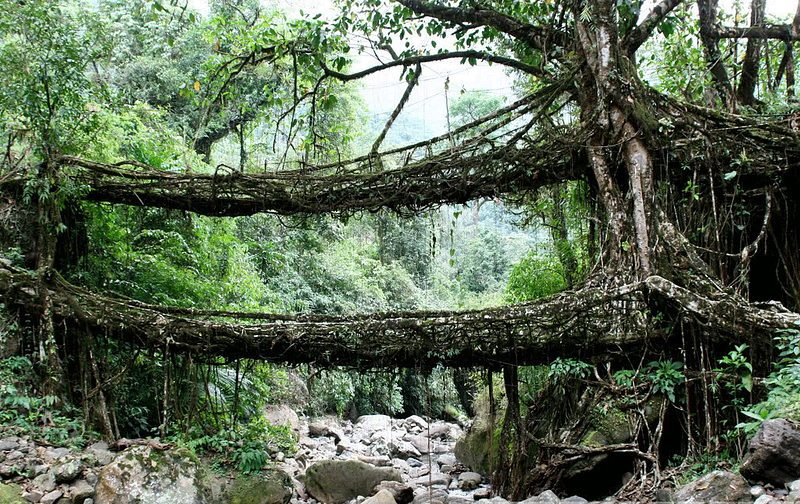
Although the trend is to now build steel-rope bridges, a more modern innovation (obviously), there is plenty of evidence that the “natural” solution has been used for many hundreds of years, with the oldest natural bridges hypothesized to be as much as 500 years old by some.

This is all possible thanks to the unique way these particular rubber trees grow: often high on a cliff or boulder, with their roots extending far down to the low water level below. By shaping these malleable roots carefully over long stretches of time — particularly if there are two good trees on opposite banks — spans in excess of 30 meters (100 feet) can easily be crossed.
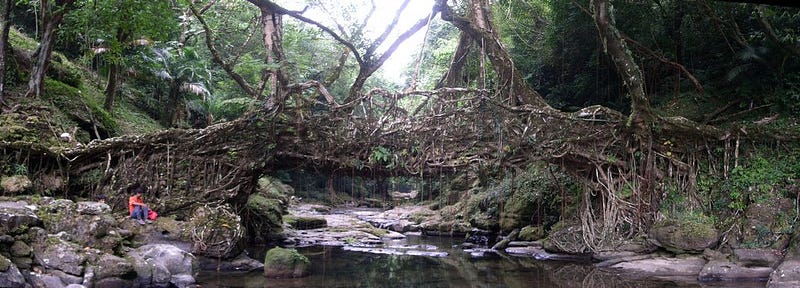

I know it sounds crazy to work with nature and give it the time it needs to do the work for you, but sometimes, that’s exactly the right solution for the problem. If you’ve made it this far and you’ve got a few more minutes, you might enjoy this mini-documentary on one of the wettest regions in the world, and how they do their best to work with nature to solve the problems of their day-to-day lives.
https://www.youtube.com/watch?v=5jrmm7gjZGE
It’s the most amazing thing I’ve run into this week, and I hope you enjoyed it. See you back here tomorrow for more joys and wonders of the Universe!
Missed the best of our comments of the past week? Check them out here!
Leave your comments at our forum, and support Starts With A Bang on Patreon!





